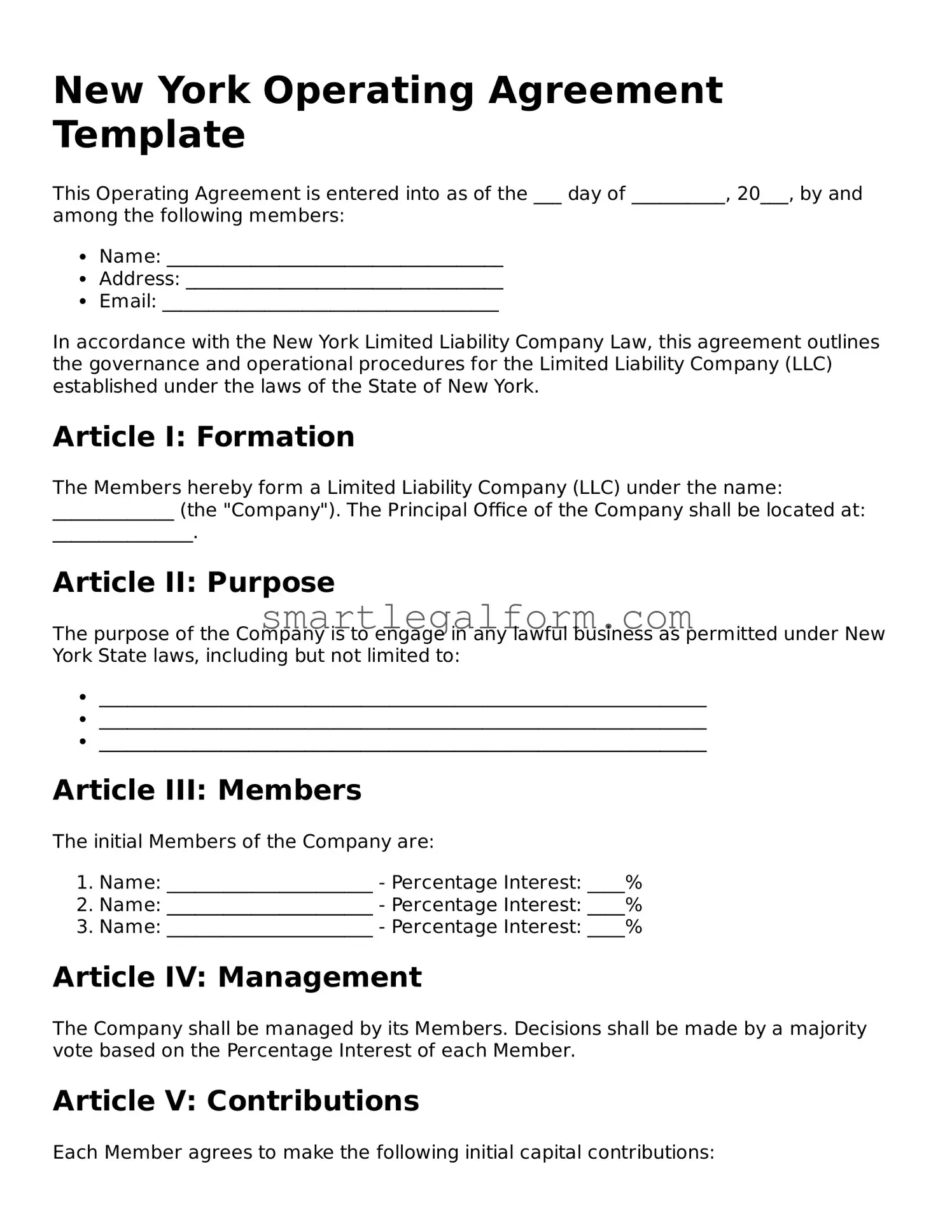New York Operating Agreement Template
This Operating Agreement is entered into as of the ___ day of __________, 20___, by and among the following members:
- Name: ____________________________________
- Address: __________________________________
- Email: ____________________________________
In accordance with the New York Limited Liability Company Law, this agreement outlines the governance and operational procedures for the Limited Liability Company (LLC) established under the laws of the State of New York.
Article I: Formation
The Members hereby form a Limited Liability Company (LLC) under the name: _____________ (the "Company"). The Principal Office of the Company shall be located at: _______________.
Article II: Purpose
The purpose of the Company is to engage in any lawful business as permitted under New York State laws, including but not limited to:
- _________________________________________________________________
- _________________________________________________________________
- _________________________________________________________________
Article III: Members
The initial Members of the Company are:
- Name: ______________________ - Percentage Interest: ____%
- Name: ______________________ - Percentage Interest: ____%
- Name: ______________________ - Percentage Interest: ____%
Article IV: Management
The Company shall be managed by its Members. Decisions shall be made by a majority vote based on the Percentage Interest of each Member.
Article V: Contributions
Each Member agrees to make the following initial capital contributions:
- Name: ______________________ - Contribution: $______________
- Name: ______________________ - Contribution: $______________
- Name: ______________________ - Contribution: $______________
Article VI: Fiscal Matters
The fiscal year of the Company will end on the 31st day of December each year. Financial records will be maintained by the designated member and made available for inspection by any Member upon reasonable request.
Article VII: Indemnification
To the fullest extent permitted by law, the Company shall indemnify any Member for liabilities incurred in connection with the Company, provided that such Member acted in good faith and in a manner they reasonably believed to be in the best interest of the Company.
Article VIII: Amendments
This Operating Agreement may be amended only by a written agreement signed by all Members of the Company.
Article IX: Miscellaneous
This Agreement constitutes the entire agreement among the Members and supersedes any prior agreements or understandings, whether written or oral.
IN WITNESS WHEREOF, the Members have executed this Operating Agreement as of the date first above written.
- ____________________________________ (Signature of Member)
- ____________________________________ (Signature of Member)
- ____________________________________ (Signature of Member)
Date: _____________________________
